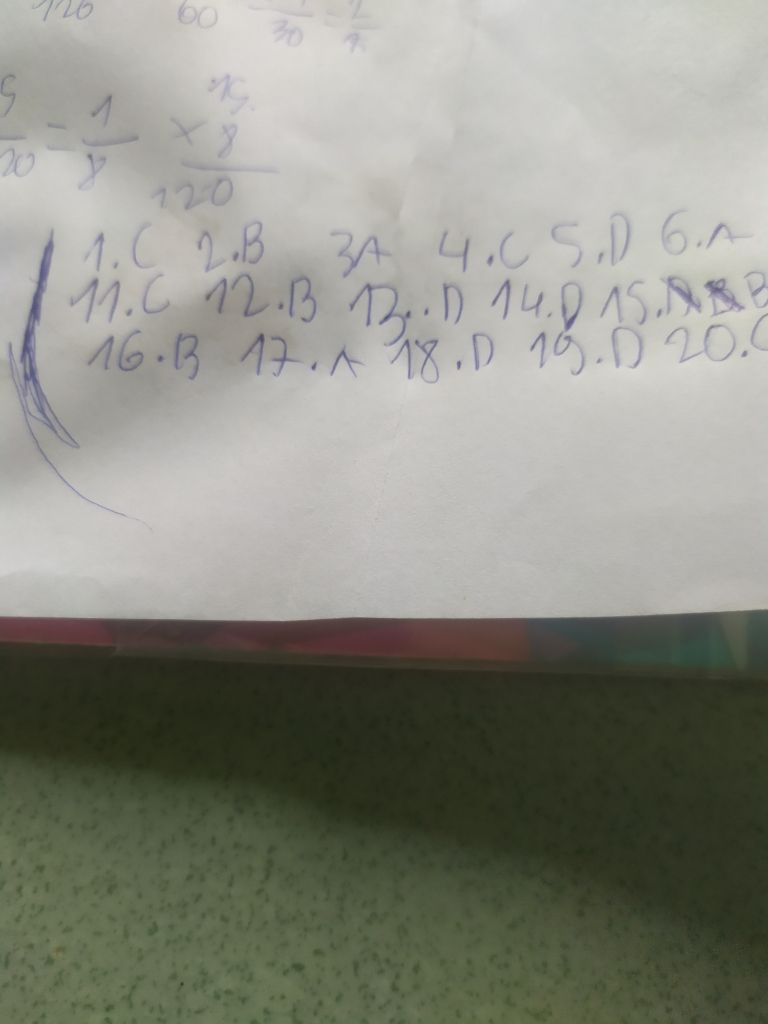cac ban co tra loi tren 7 mk cho 5 sao co 20 cau trac nghiem thoi I. Choose the correct word which has a different sound in the part underlined. 1. A. extensive B. evacuate C. rescue D. expect 2. A. weather B. earthquake C. heaviness D. spread 3. A. climatology B. injury C. debris D. communication II. Choose the word which has a different stress pattern from the others. 4. A. property B. permanent C. victim D. tornado 5. A. ecology B. resident C. environment D. autography 6. A. emergency B. typhoon C. homeless D. tsunami III. Choose the part which needs correction. 7.They are cutting dead trees preparing for the forthcoming storm. A B C D 8. A earthquake occurred at noon when many people were having lunch. A B C D 9. If technology continues to advance so quickly, what is life like in a hundred years? A B C D 10. We didn’t put the car into the garage before the hail occurred. A B C D IV. Choose the best answer to complete the following sentences. 11. Thousands of people ............................. by natural disasters every year. A. are affecting B. are affected C. have affected D. were affected 12. A: No one was killed in the forest fire two months ago. B: ..................................... A. Oh, dear! B. That’s shocking! C. That’s relief! D. How terrible! 13. .............. is the most common natural disaster in your country?- Snowstorms. A. Which B. How C. Who D. Which 14. The government sent rescue food, drink and medical supplies to ................. homes. A. flood B. flooded C. flooding D. floods 15. All the villagers .................. to safe areas before the volcano erupted last Sunday. A. had evacuated B. were evacuated C. evacuated D. had been evacuated V. Read the text and choose the best answer to each question below. Tsunamis, whose name derives from the Japanese expression for “high wave in a harbour”, are giant sea waves. These waves are quite different from storm surges (tăng). They are also referred to by the general public as tidal waves although they have nothing to do with tides.Scientists often refer to them as seismic (địachấn) sea waves, which is far more appropriate because they are often the result of undersea seismic activity. Tsunamis can be caused when the sea floor suddenly moves, during an underwater earthquake or volcano, and the water above the moving earth is suddenly displaced. This sudden shift of water sets off a series of waves. These waves can travel great distances, at speeds close to 700 kilometers per hour. In the open ocean, tsunami waves are not very high, often no more than one or two meters. It is when they hit the shallow waters near the coast that they increase in height, possibly up to 40 meters. 16. The passage mainly discusses......................................................................... A. tidal waves B. tsunamis C. tides D. storm surges 17. All of the following is true about tidal waves EXCEPT ........................... A. they are as another name for tsunamis. B. they are caused by sudden changes in high and low tides. C. this term is not used by the scientists. D. the name refer to the same phenomenon as seismic sea waves. 18. The word “them” in the passage refers to ........................................... A. tidal waves B. tsunamis C. storm surges D. sea waves 19. The word “shallow” in the passage mostly means .............................. A. not clear B. tidal C. coastal D. not deep 20. It can be understood from the passage that tsunamis ............................... A. cause severe damage in the middle of the ocean. B. generally reach heights greater than 40 meters. C. are far more dangerous on the coast than in the open ocean. D. are often identified by ships on the ocean.
2 câu trả lời
l/ko có gạch chân
ll/
4,d
5,b
6,c
lll/bạn ko ghi rõ
lV/
11,d
12,c
13,a
14,b
15,a
16,c
17,a
18,d
19,a
20,c
Câu hỏi trong lớp
Xem thêm


